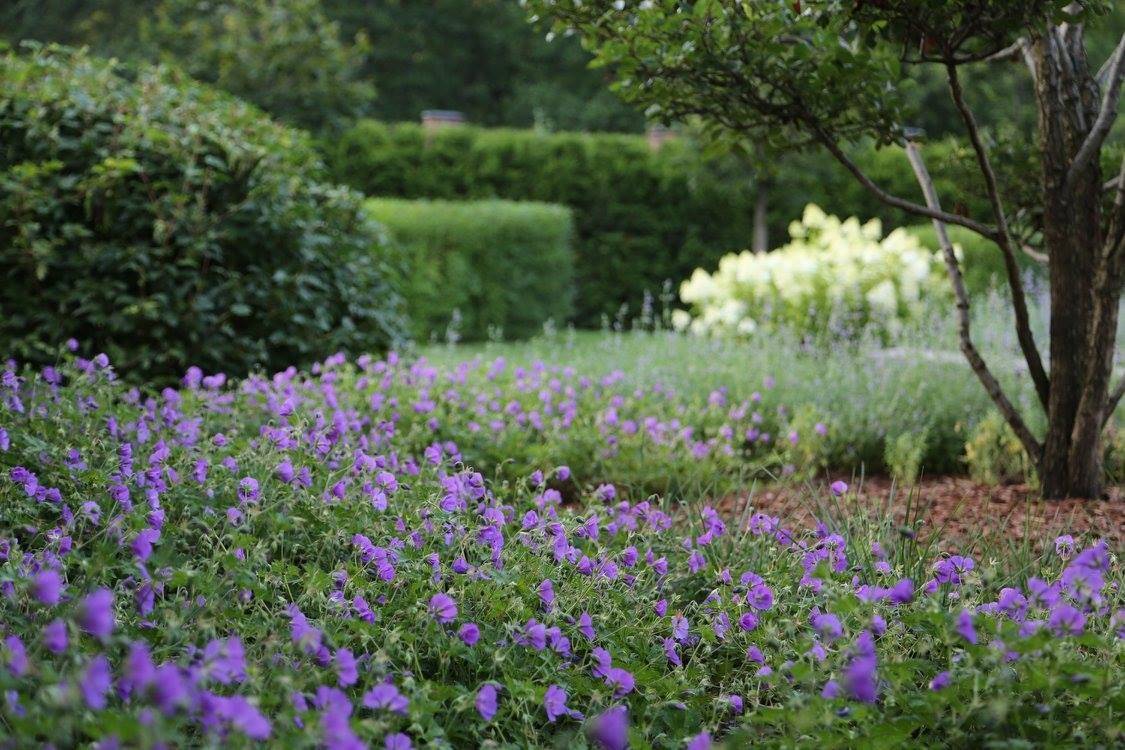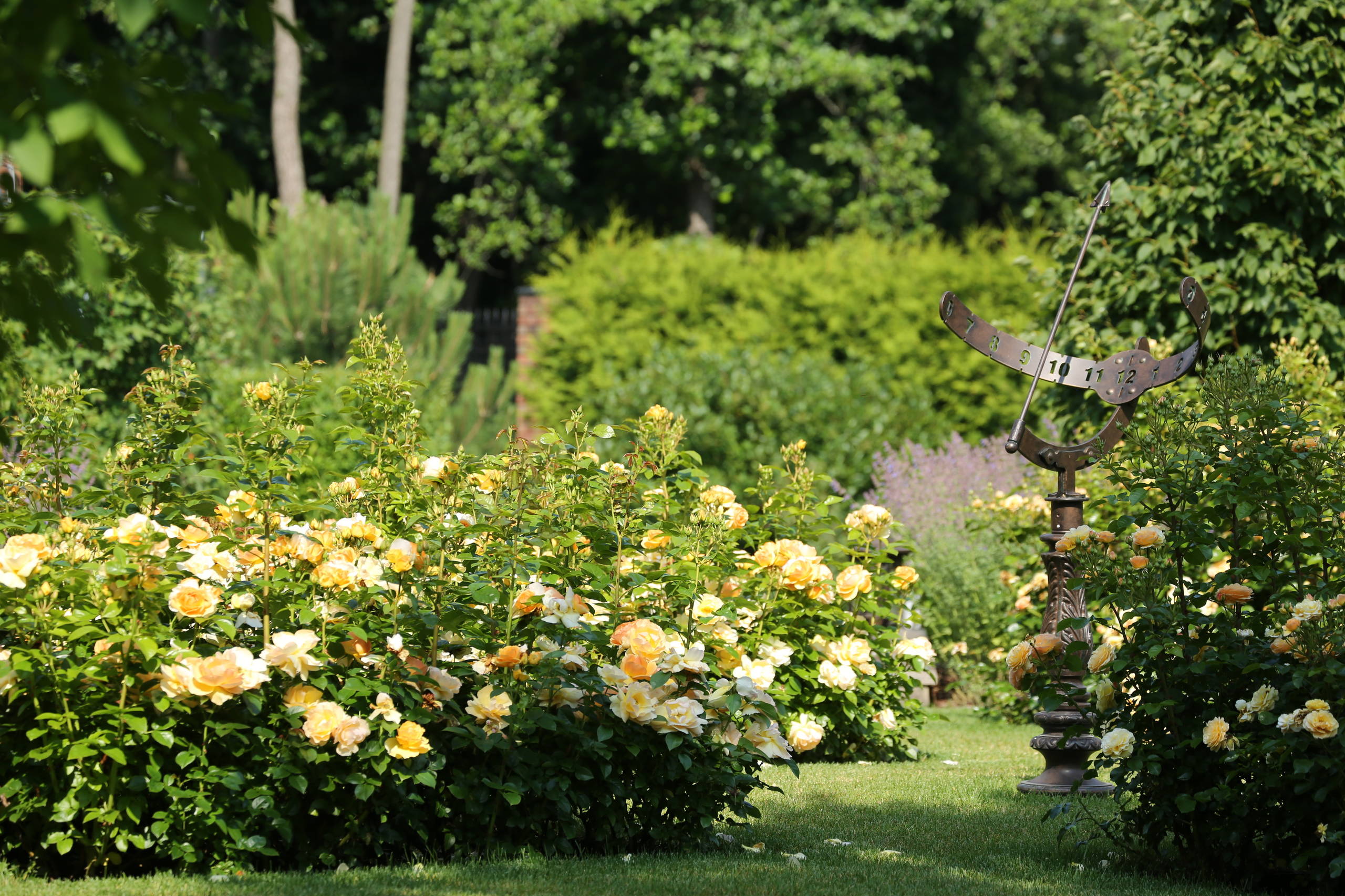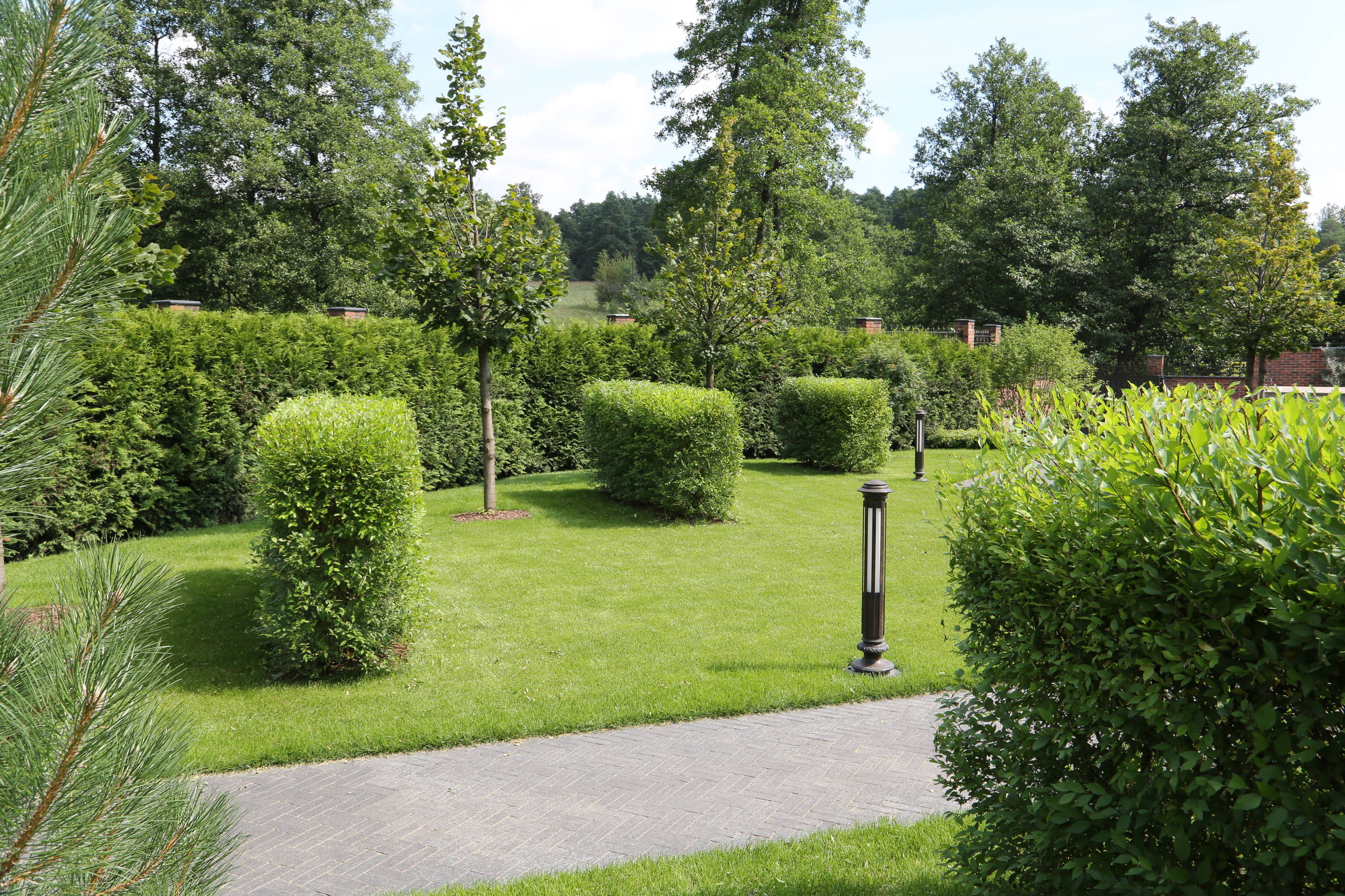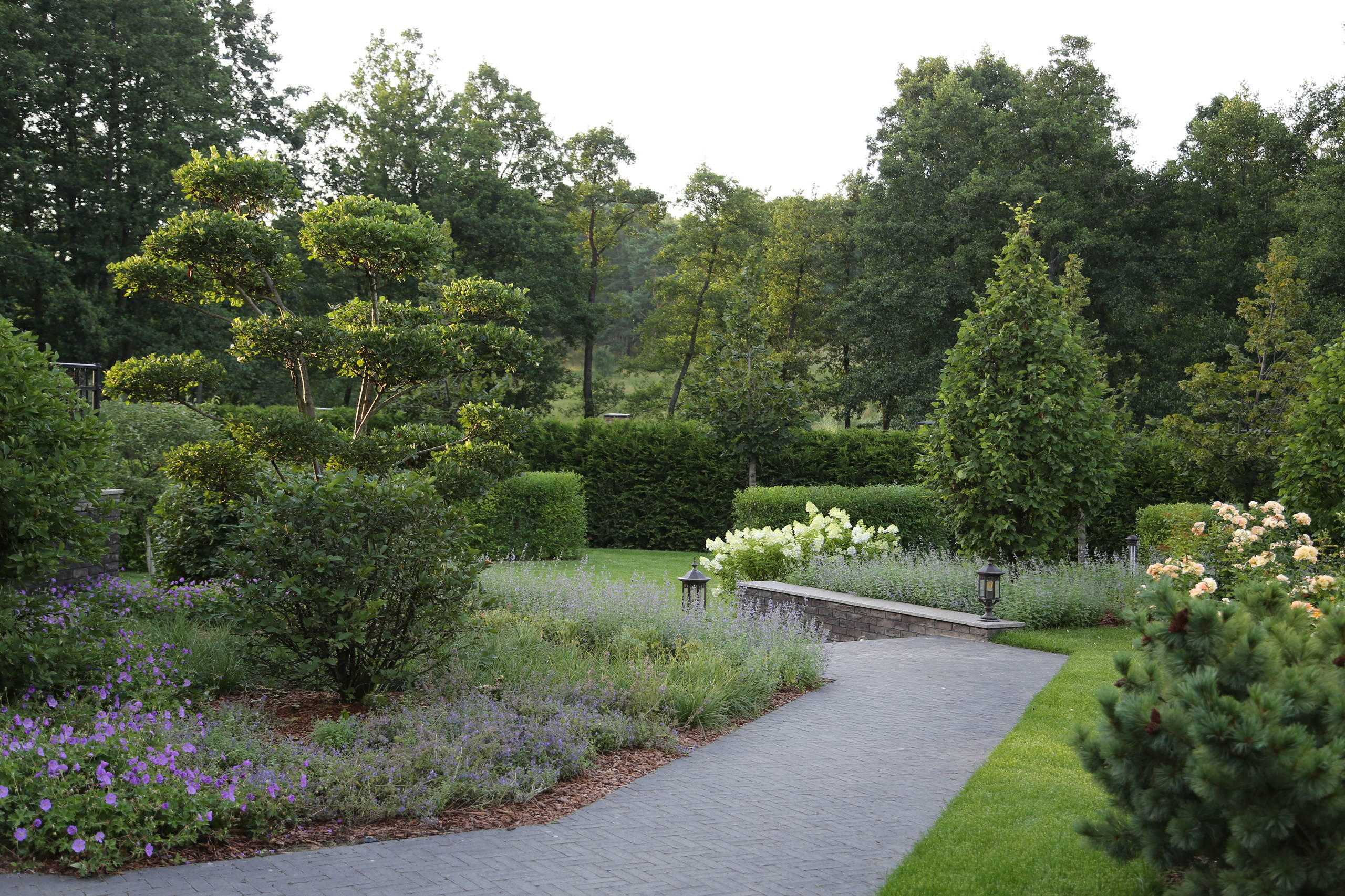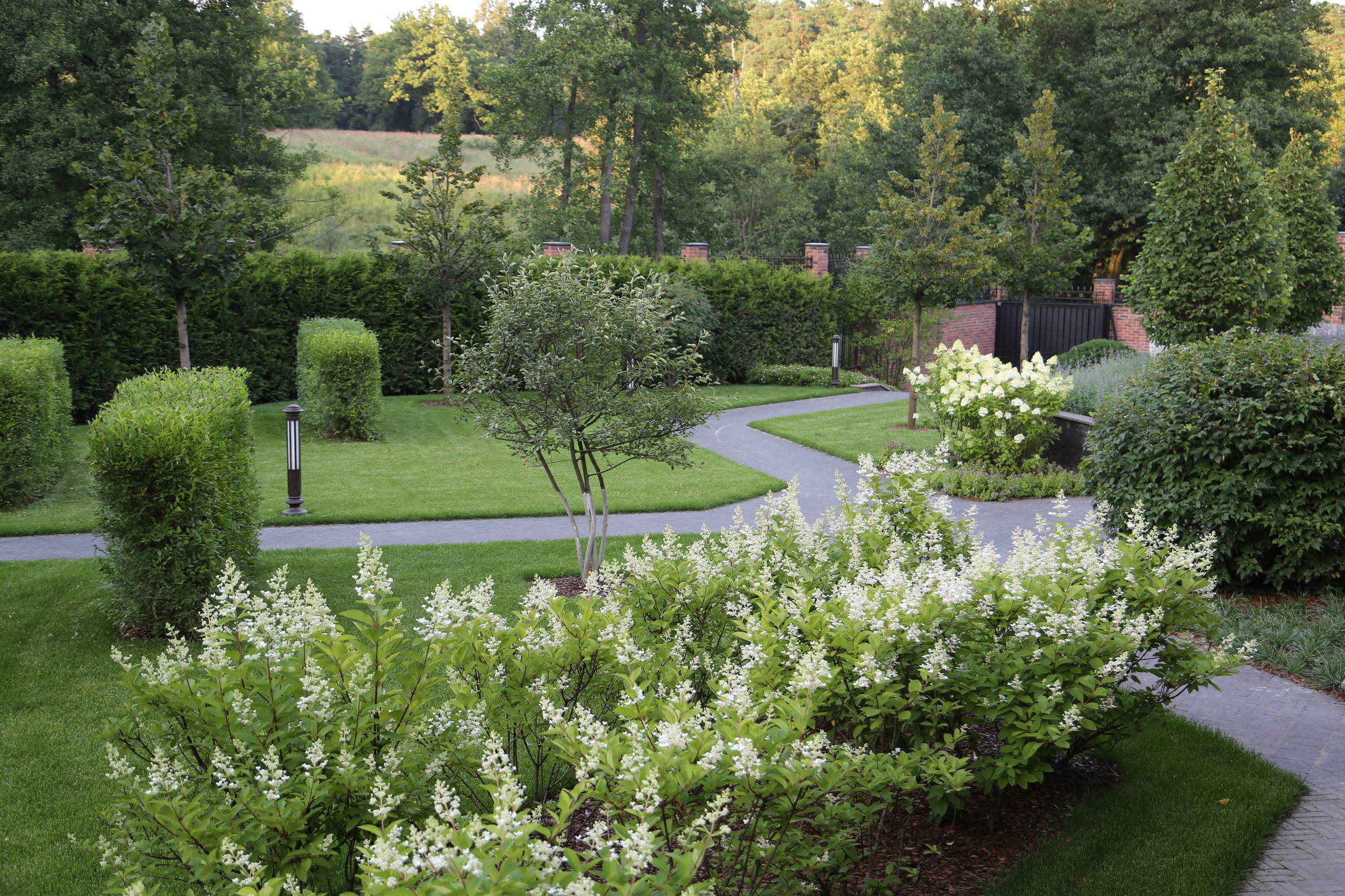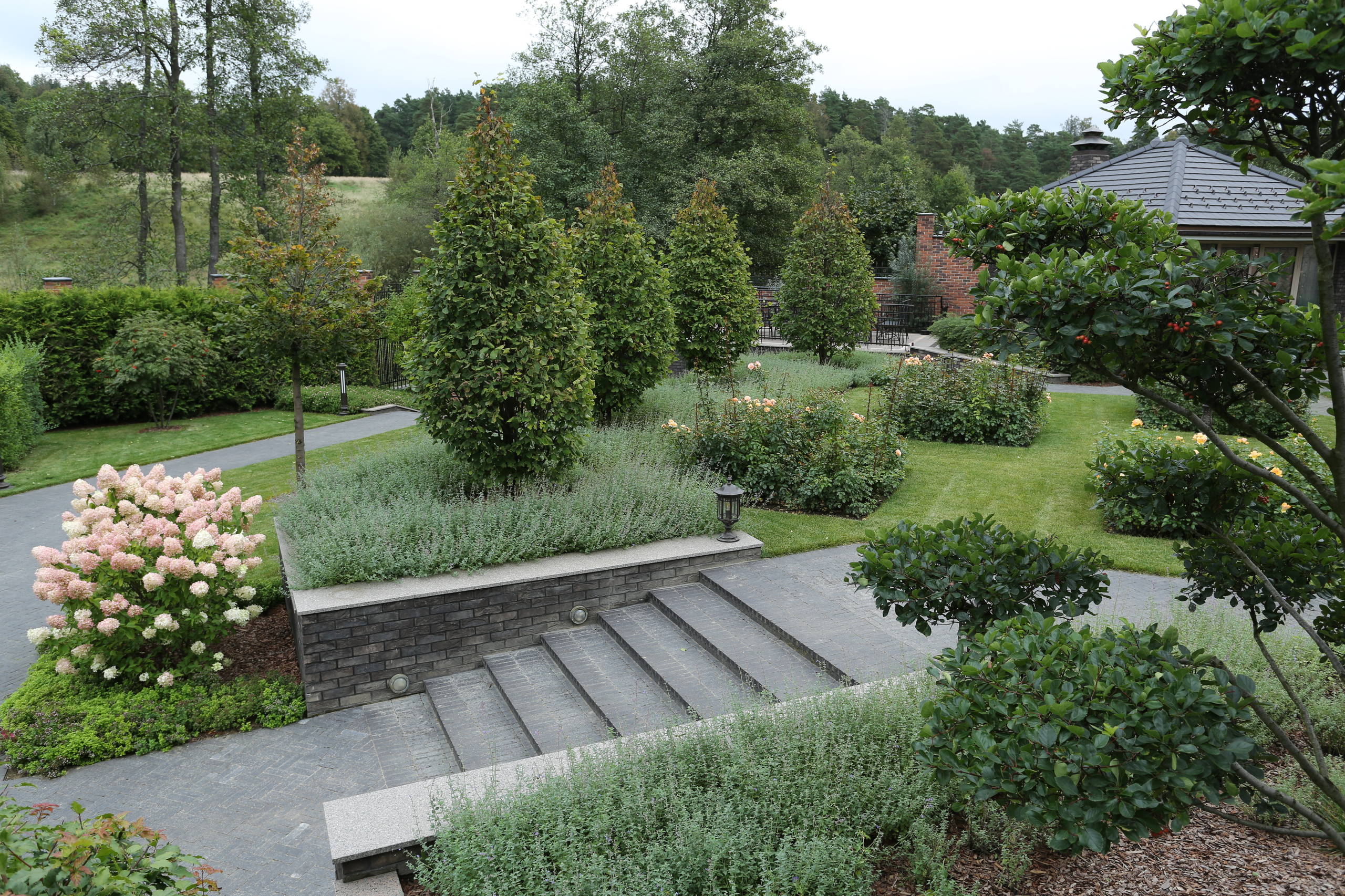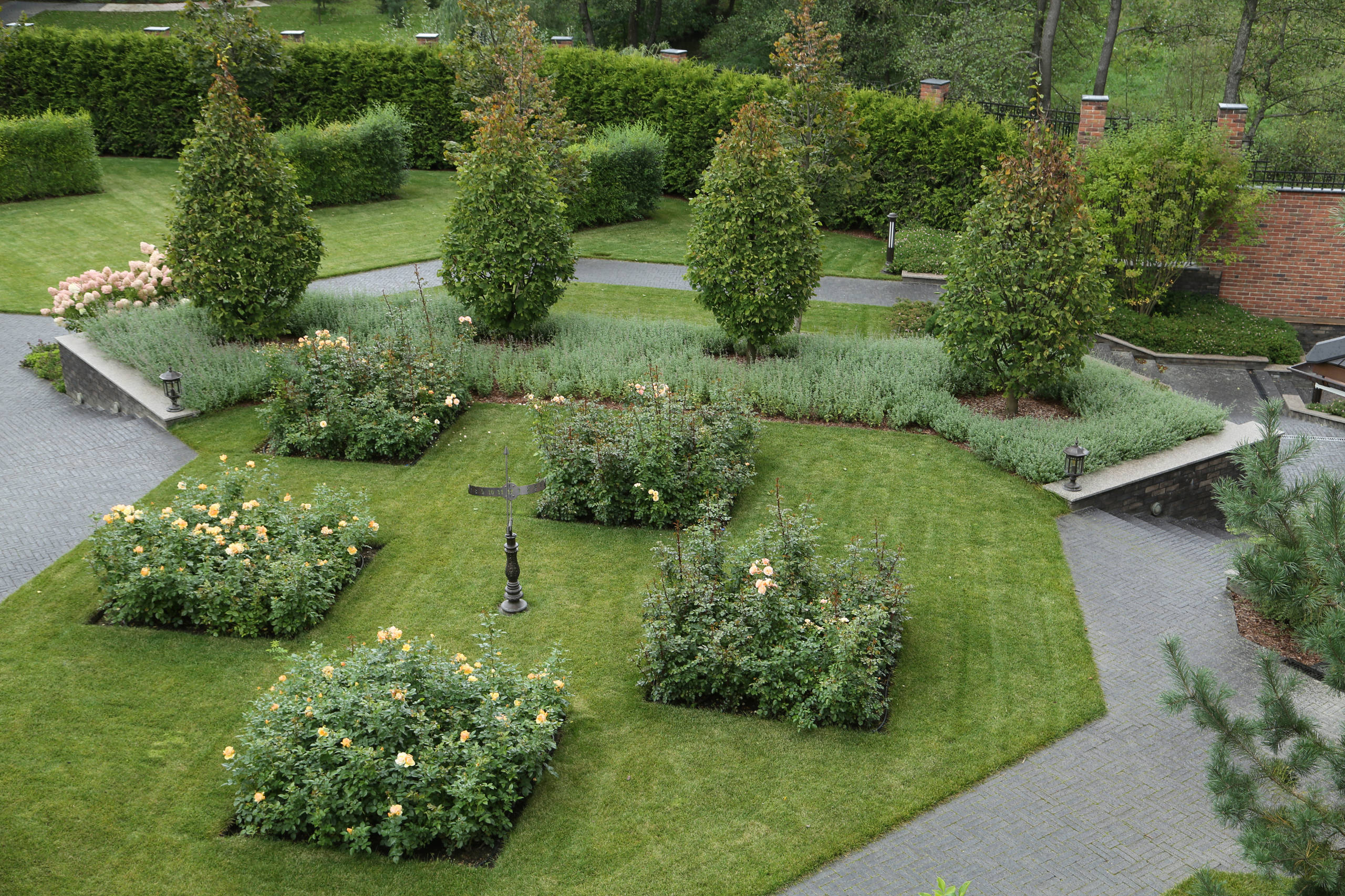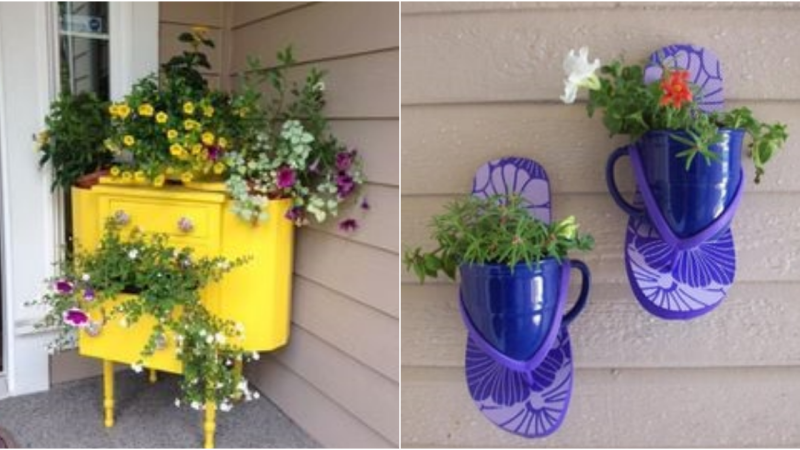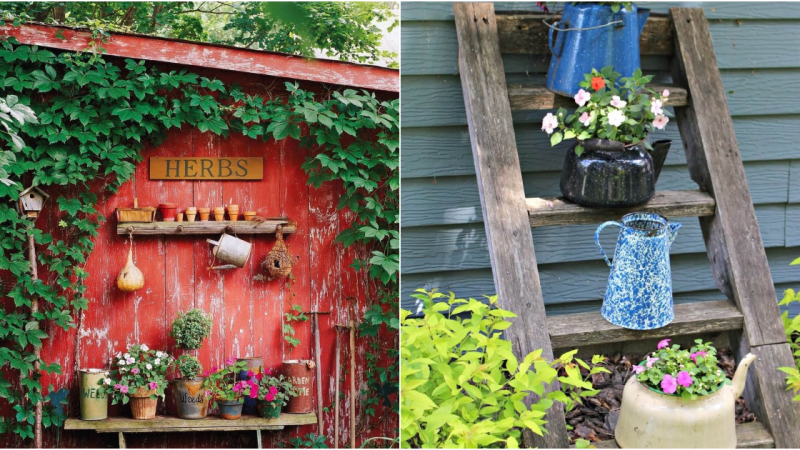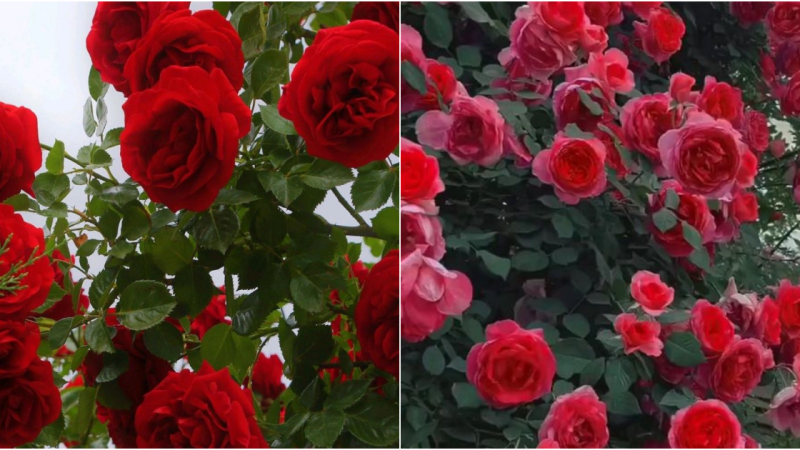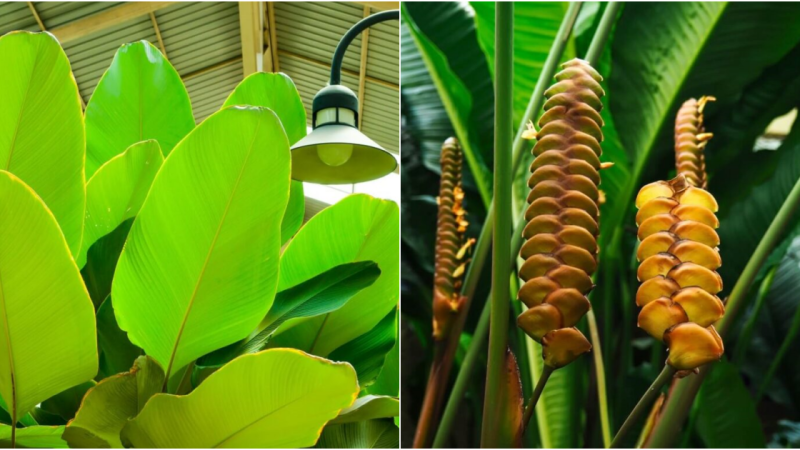The Honey Garden in Suburbs – With Honey-Producing Plants, Bonsai, and Beehive-Inspired Design
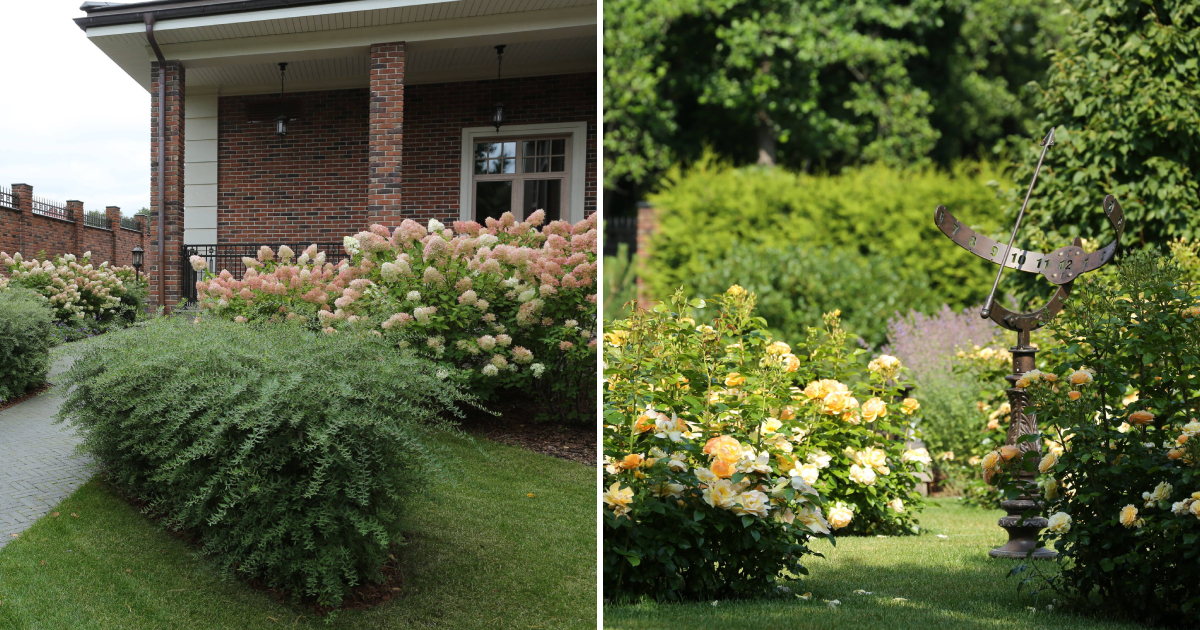
Situated on a high riverbank, overlooking the forest and with a steep descent to the water, the estate was built on the site of an old rural house. When landscape architects Natalya Borisova and Yevgeny Korneev began working on the project, the owners had already decided on the architecture of the new house and garage, planning to construct them in the English style.
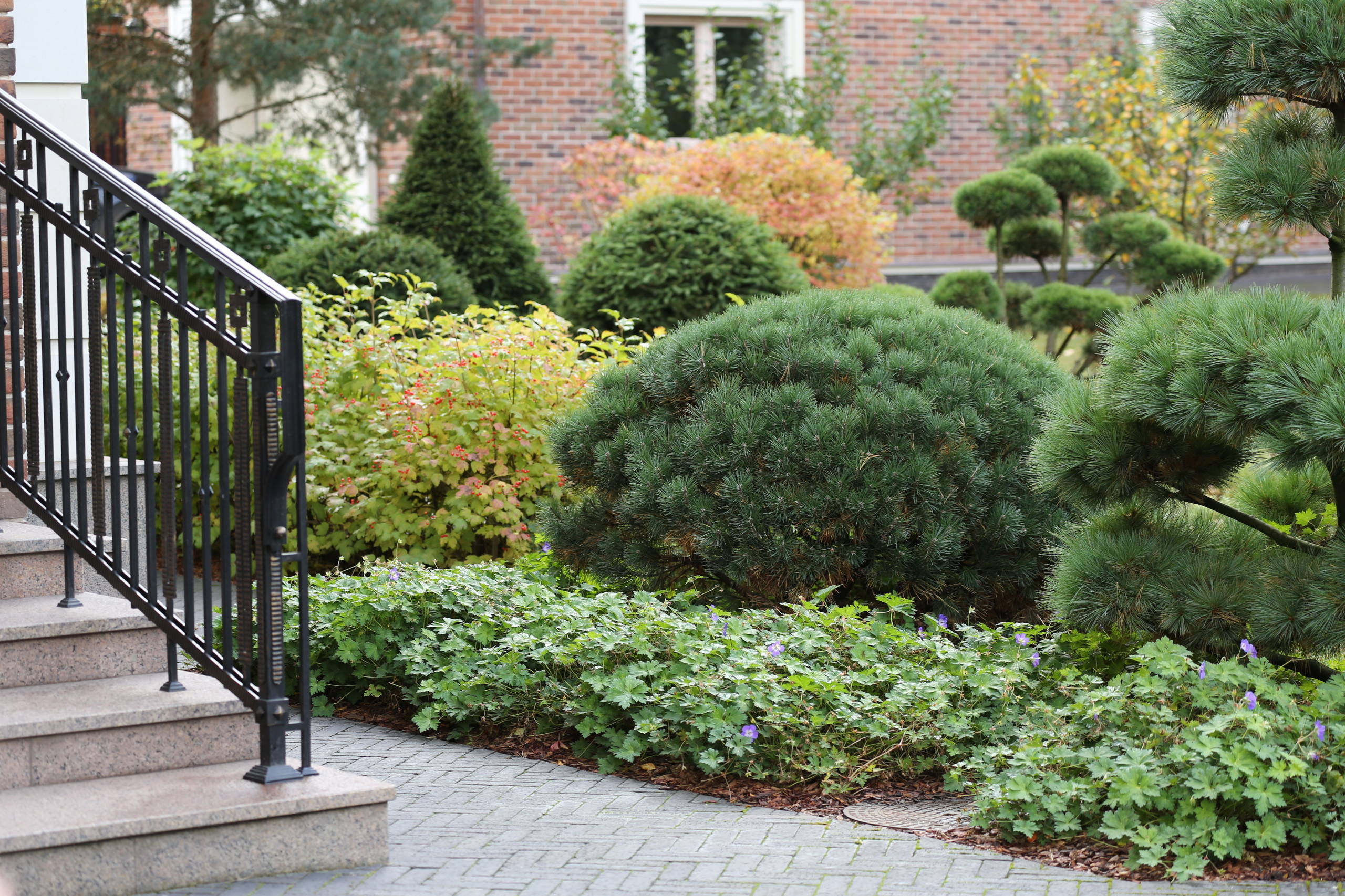
However, the preserved bathhouse differed significantly from the new facades and was located too close to the main house. The main task faced by the architects was to create a functional and comfortable space while connecting all the structures, which were positioned at different angles. Thus, the terraced garden with honey-bearing plants and staircases that linked different levels of the plot was born.
The owners requested a useful garden with fruit trees, vegetable beds, and even a small apiary. Many plants, such as old pines, firs, and cedars, were preserved and seamlessly integrated into the new landscape.
The garden works lasted nearly five years and were carried out in parallel with the construction of the house and finishing touches. “It’s right to start landscaping when there is no house on the site yet,” believes Natalya Borisova. “In this project, with its complex slope, it was important to correctly ‘plant’ the building.”
Due to dense development and an almost ten-meter difference in elevation, the plot was divided into levels. The main house, bathhouse, and garage with a canopy were located on the upper terrace, while the second platform housed a greenhouse, a small vegetable garden, and an observation area. The lower part consisted of utility areas with direct access to the water. The plot owner has a passion for beekeeping and planned to establish an apiary, so the concept was given a “honey” theme, with the layout structure resembling honeycomb cells.
Note: The pronounced relief of the plot allowed for the integration of a garage for garden equipment into the hill, featuring a usable roof. A relaxation area was arranged on top, offering a view of the opposite riverbank.
The honey-bearing plants and the parterre with a modular rose garden, visible from the house windows, support the theme. Two types of roses with a yellow-honey shade were used.
“We don’t like it when there are too many plant varieties in a garden. We try to use a limited number of species,” notes Natalya Borisova. Among the trees here are fruit trees, linden, pine, and cedar, which were already present on the plot. Down by the river, willows grow in combination with moisture-loving perennials. Living hedges made of hydrangea and shaped trees (apple, fir, and hawthorn bonsai) are surrounded by block plantings of perennials, creating an interesting geometry in the garden. Spireas of different varieties “hold” the slopes.
Trimmed diagonal hedges add dynamism to the garden, disrupting regularity and altering perspectives. “Our clients are bold individuals; not everyone would dare to adopt such a technique. Large masses of perennials are also not to everyone’s liking, but in this project, we planted around 350 spireas on the slope. Usually, we have to explain to clients why we use so many plants of the same variety. Here, our ideas were met with approval,” explain the architects.
The garden’s planning involved the homeowner herself, who, along with Natalya and Yevgeny, visited nurseries and selected plants. “This is a very vibrant garden, and we changed some details in the overall concept several times. During one of the trips, the homeowner noticed a hawthorn bonsai and insisted on using it in the project. We had to modify part of the dendroplan to fit it into the landscape, but we found worthy companions,” the project authors share.
The project’s authors aimed to create a garden that would look picturesque regardless of the season. “It’s hard to say which season the landscape looks best. Perhaps most strikingly, in July when roses and perennials are in bloom. In August and September, it’s the time for hydrangeas, and the numerous grasses, which are abundant here, are especially decorative in autumn. In spring, the Amur chokeberry and fruit trees blossom, while in winter, the garden is defined by trimmed plants, umbrella shapes, and the cones of linden trees.”
